I first learnt of the Broomway when I read The Old Ways by Robert Macfarlane a few years ago. Since then I’ve always wanted to walk ‘the deadliest path in Britain’. The path stretches six miles from Great Wakering to Foulness Island across Maplin sands. Only accessible at low tide, the Broomway was the only way on and off the island until 1922. It has claimed more than 100 lives over the centuries. Today, Foulness island is owned by the Ministry of Defence, meaning that the Broomway can only be walked in good visibility and on days when munitions aren’t being tested. As soon as you reach Foulness you must turn around and walk back again.
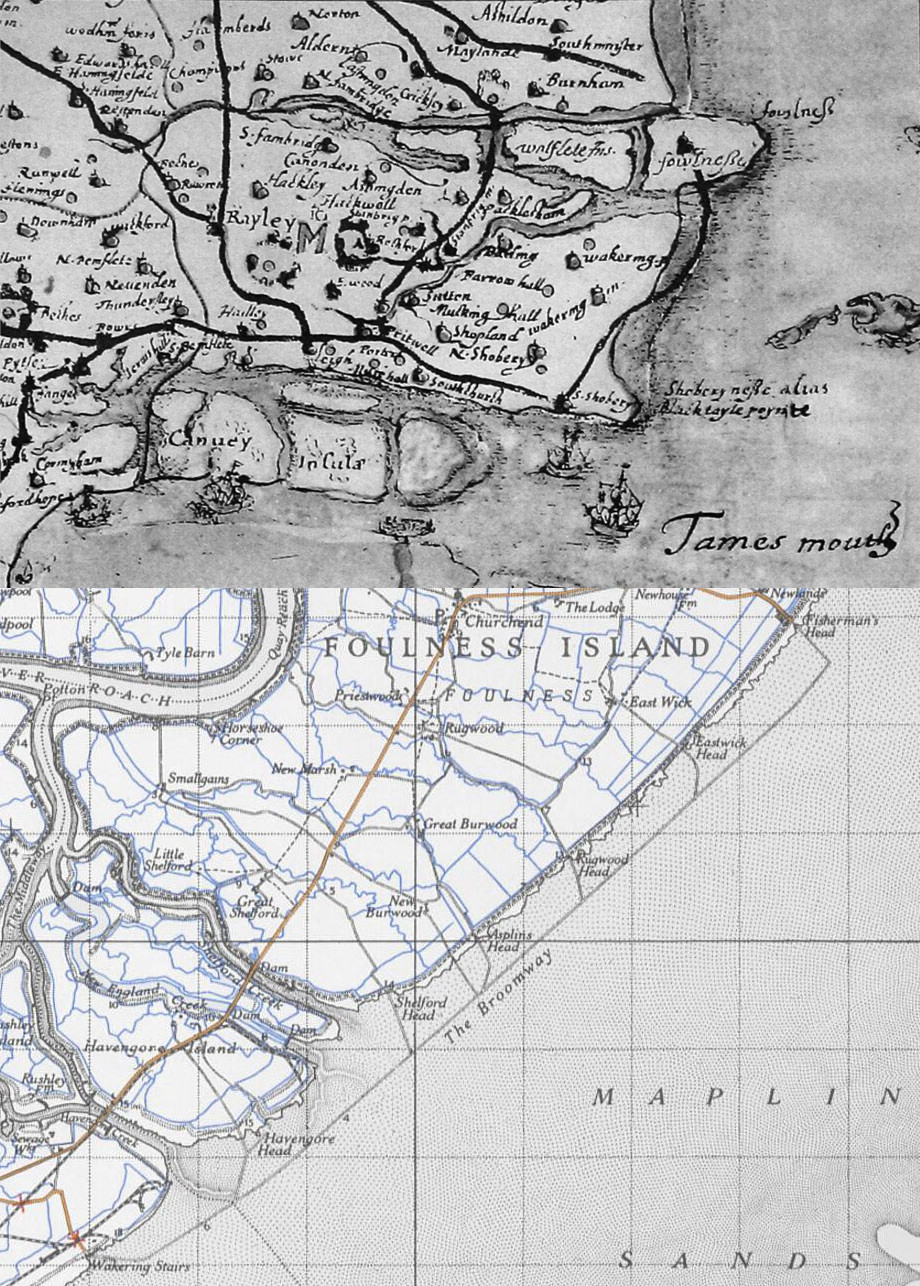
Down the pub, I mentioned all this to the boldly goes trio and was pleasantly surprised when they invited me to walk it with them. Given the path’s fearsome reputation we made sure to do our homework. This meant encountering the story of a young man who, poaching for wildfowl one January afternoon with friends in 1969, never returned from the sands after a thick mist rolled in quickly from the North Sea. Sudden fog was definitely our main concern and we made sure to take a second compass just in case we would need to ‘steer’ ourselves back to safety. I even went out the evening before our trip to practice navigating quickly and accurately in the half-light.
On the morning of the walk we got up early and made the drive from Hertfordshire to Great Wakering in order to arrive with plenty of time to explore the Broomway before the tide turned. The forecast was good but it was an icy November morning and we were still anxious that the whole trip may yet come to nothing.
It turns out that just before you reach Wakering Stairs there’s a military checkpoint that also controls access to the Island. After asking nicely, we were allowed to drive through and park at the start of the Broomway itself. It was cold and slightly foggy, a typical North Sea morning. Less typical were the warning signs and the squat grey watchtower staring out over the tundra-like sands towards the mouth of the Thames. Visibility wasn’t great, but it wasn’t bad either, and we’d come a long way so we headed down the slipway and onto the sands.
You can’t actually see the destination of Foulness Island for the first few hundred yards. The Broomway heads straight out to sea. Remnants of one or two of the brooms that gave the path its name, driven into the mud centuries ago to mark a safe route, still survive. This, combined with a sea mist, the sound of geese and a distant foghorn, make those first few hundred yards amongst the most surreal experiences I’ve ever had walking in the UK.
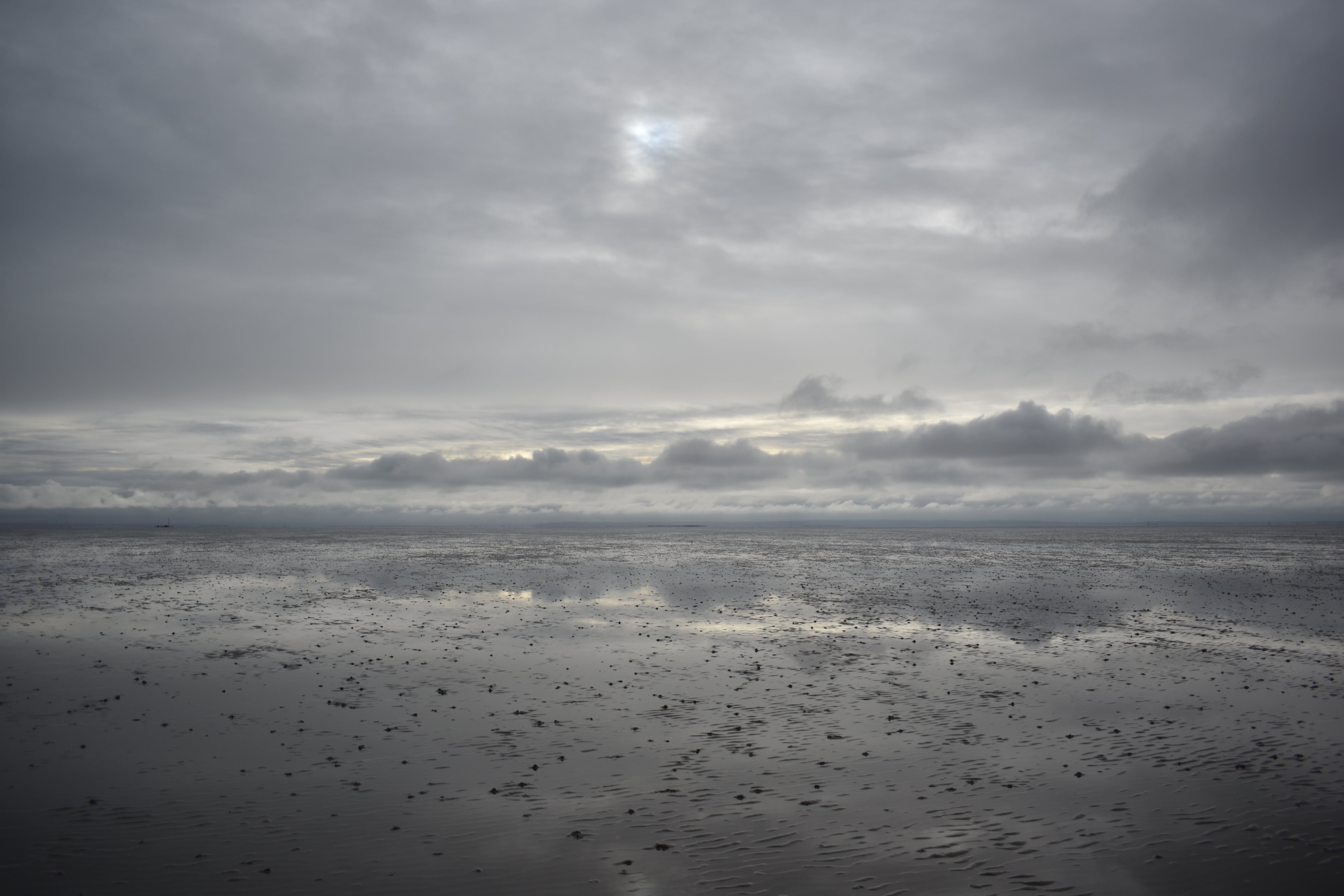
It isn’t hard to see why Maplin Sands were once earmarked for a new London airport. They are completely flat and, as we walked away from the shore, the final inches of the old tide rushed out over our boots. Looking down was surprisingly disorientating but, luckily, the fog was beginning to lift. At this point we realised that the Broomway isn’t all that long, and that the sands didn’t appear to be a complete death trap after all. This was partly a disappointment, but it did mean that we decided to wander out to an old shipwreck visible beyond the official path.
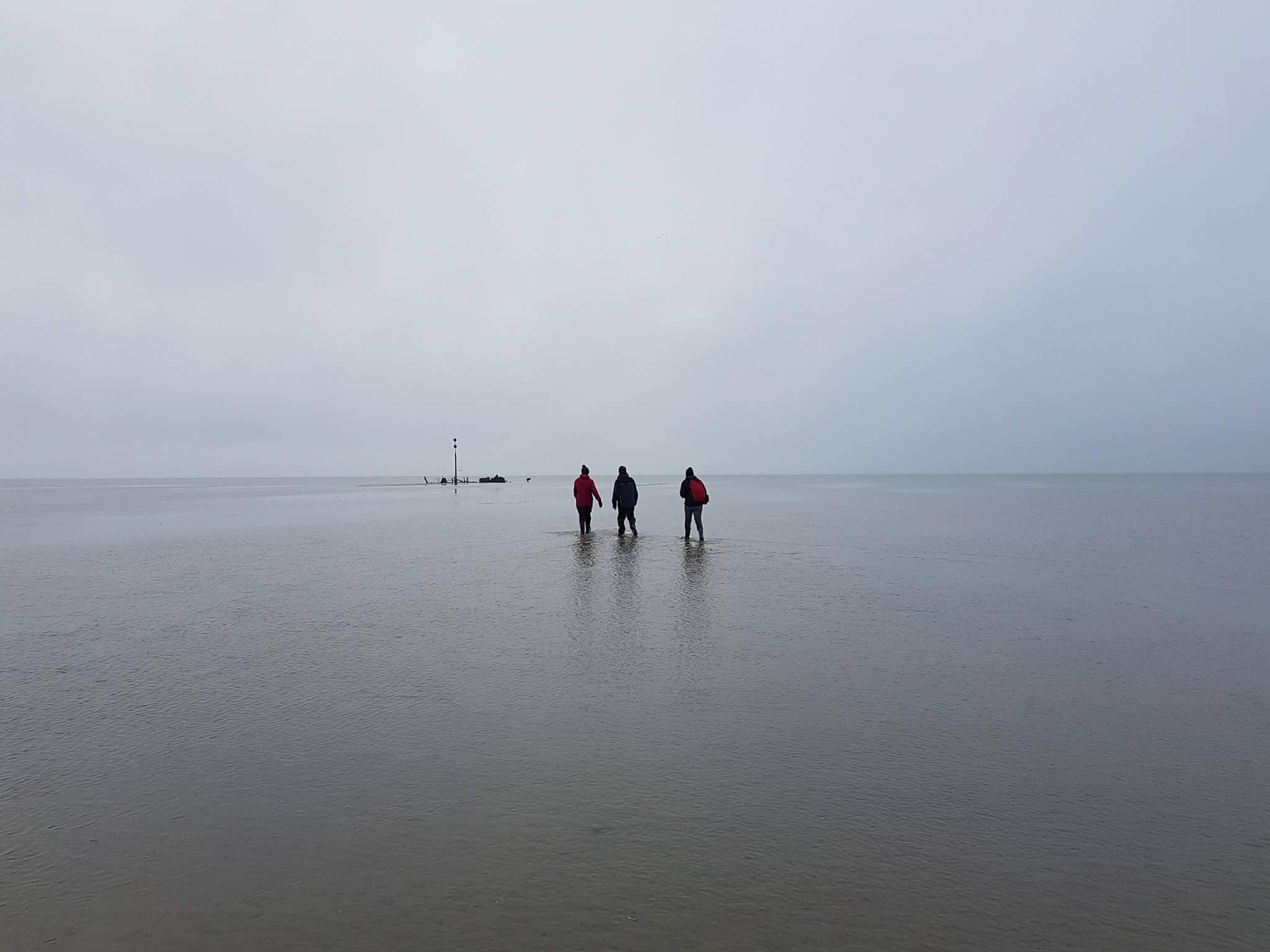
Distances are quite hard to judge on a featureless mudflat, and unsurprisingly the shipwreck was further away than it looked. Nevertheless, it didn’t take long until we were tentatively testing the sand inside the hull (definitely unsafe) and marvelling at the size of the oysters encrusted to the wood. From the shipwreck we deviated completely from the official path, instead following a line directly between two large posts that mark the river mouth of Havengore Creek for the benefit of sailors.
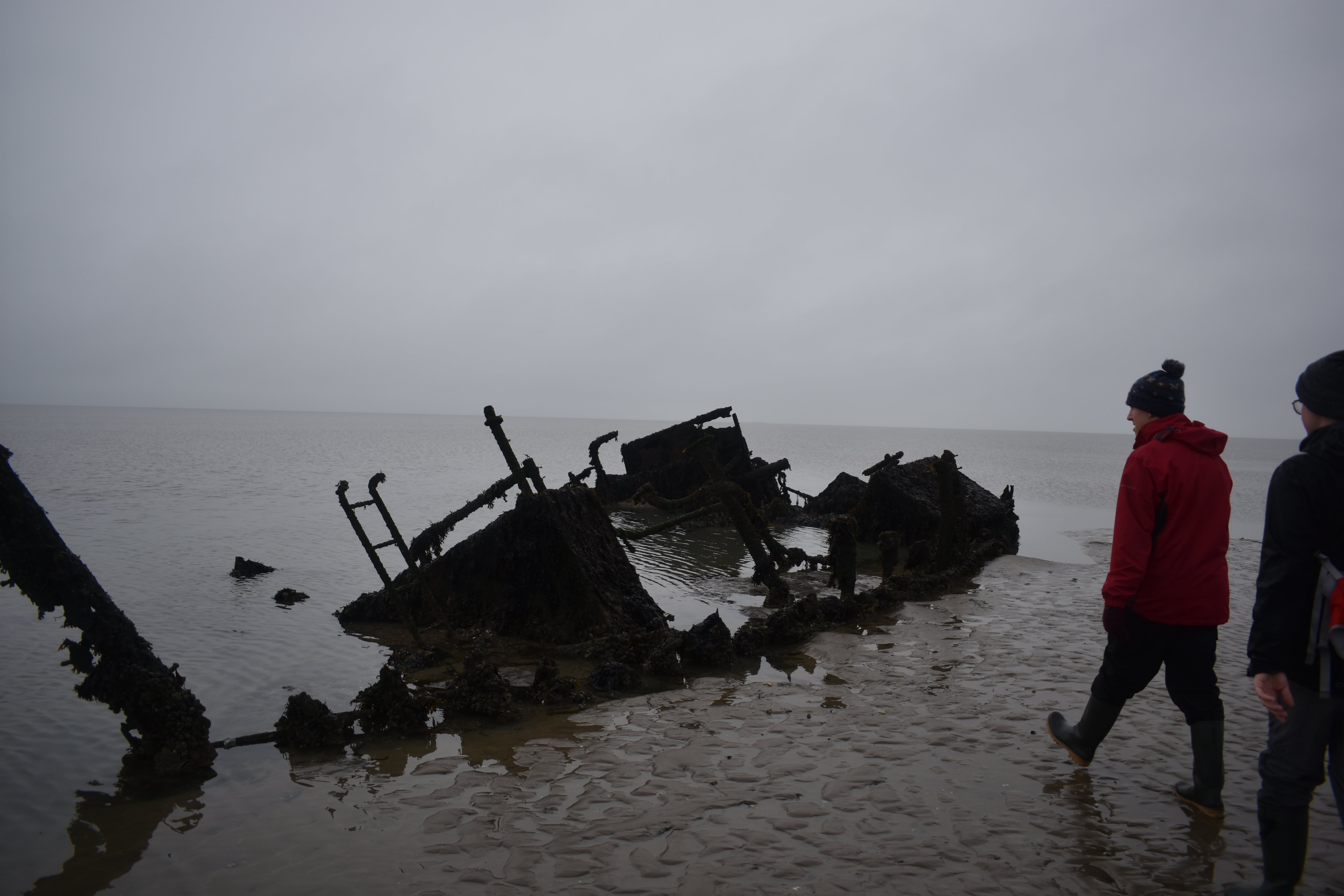
Sometime after reaching the second post we headed for Foulness Island itself. We aimed for Asplins Head, one of only two slipways to the island that are still in use. At the time I thought this seemed unnecessary. After all, there wasn’t anything special about Wakering stairs, we’d simply walked down onto the sands, why couldn’t we simply walk back to shore wherever we wanted?
There turned out to be a very good reason for not simply ignoring the map and making for shore. It turns out that the Foulness shoreline is a salt marsh. Any attempt to make it to dry land sooner than Asplins Head would involve slogging through knee deep mud (at best!). You would not want to be making for Foulness Island in a thick fog with the tide at your back!
Walking up onto the Island at Asplins Head, which still involves plenty of mud and a surprising amount of wild samphire, you’re greeted by another set of warning signs and a broad view of the island. Being flat and rural it looks, at first glance, like much of England. But the fact that entry is explicitly forbidden, and the fact that you can’t see the village itself from the headway, gives the whole place a deserted and desolate feel. It reminded me of the 1960s British TV show “The Prisoner” and I half expected Rover to come bounding across the fields toward us.
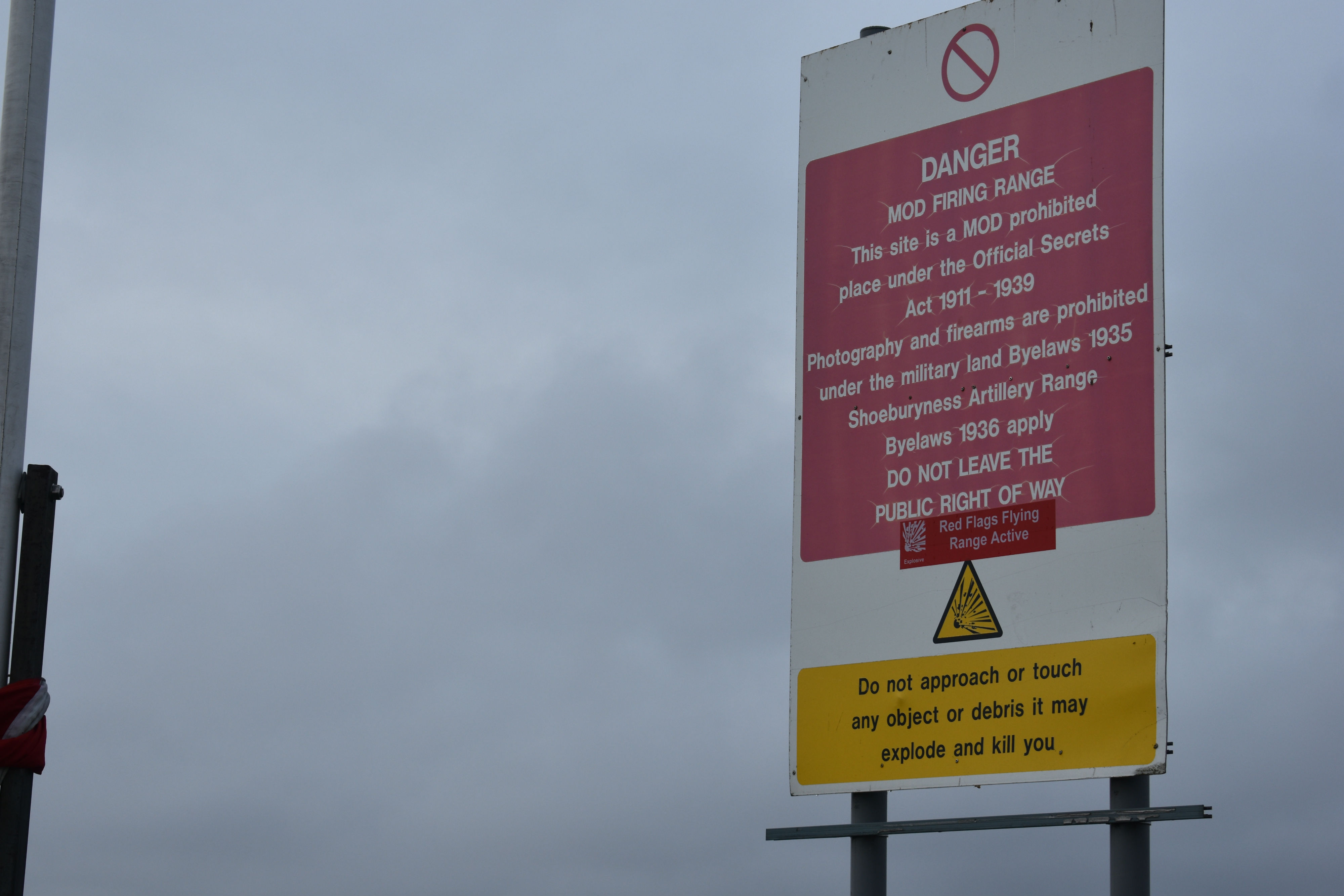
After absolutely no forbidden photographs (and definitely no trespassing) we decided to head back. The mist was gone and the sands looked just as strange in the bright sunlight. Everything looked like a watercolour. Giant container ships bound for the Thames glided over a thin plane of shimmering glass between the sand and the sky as we made for the flat greeny-brown smudge of Essex.
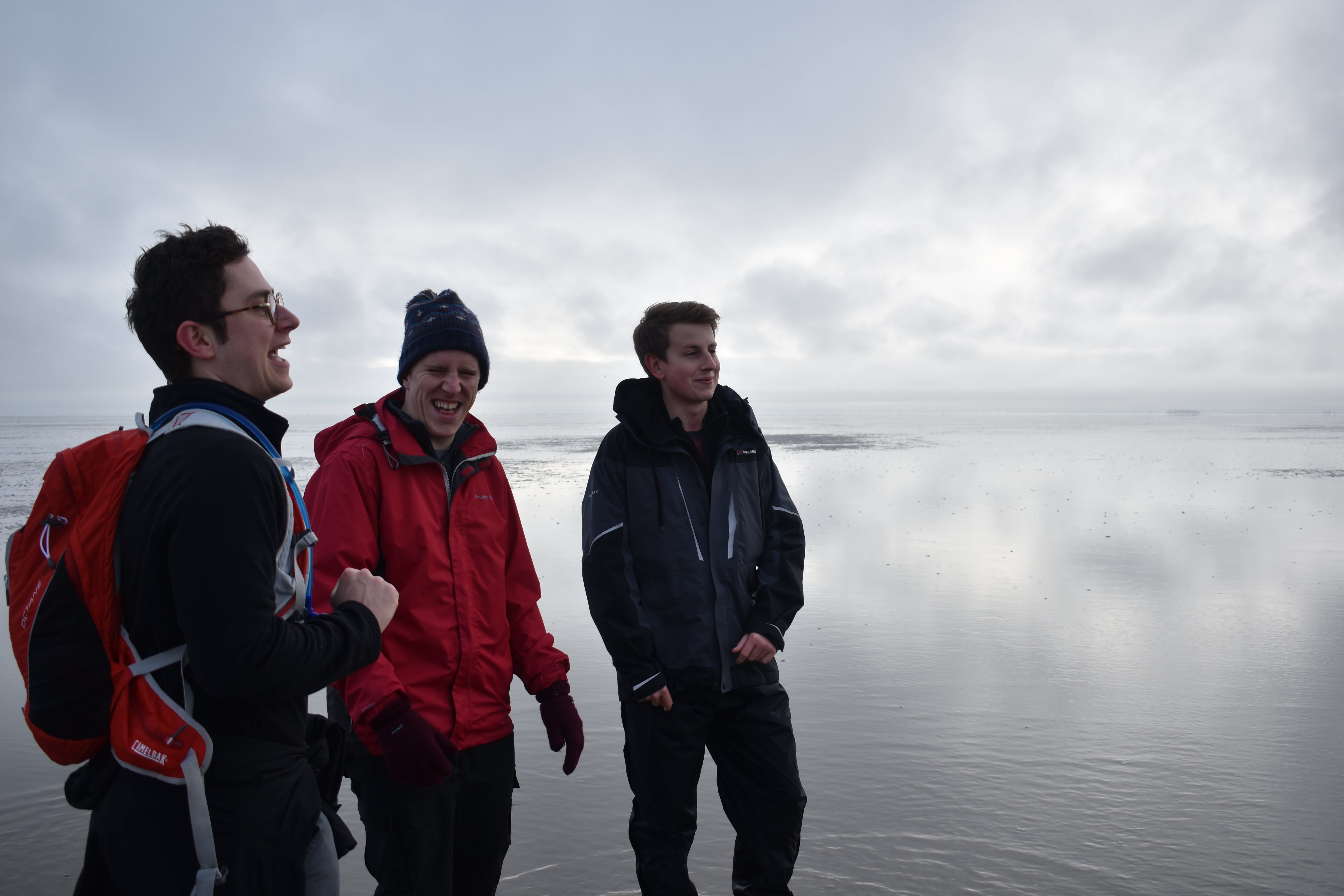
I can honestly say that the Broomway is one of the strangest places I’ve walked in the UK. And despite the fact that Maplin sands did turn out to be a little less dangerous and a little more like a giant beach than I was expecting, I still want more. I want to walk out further and reach the Sea. I want to visit at high tide in James’ boat and I want to keep walking past Aplins head along the shore of Foulness Island. Above all I desperately want to come back and walk the Broomway at night. I’ve no doubt this this would definitely be quite dangerous but I know that it will make the sands seems even larger, even stranger, even more desolate than they already are.
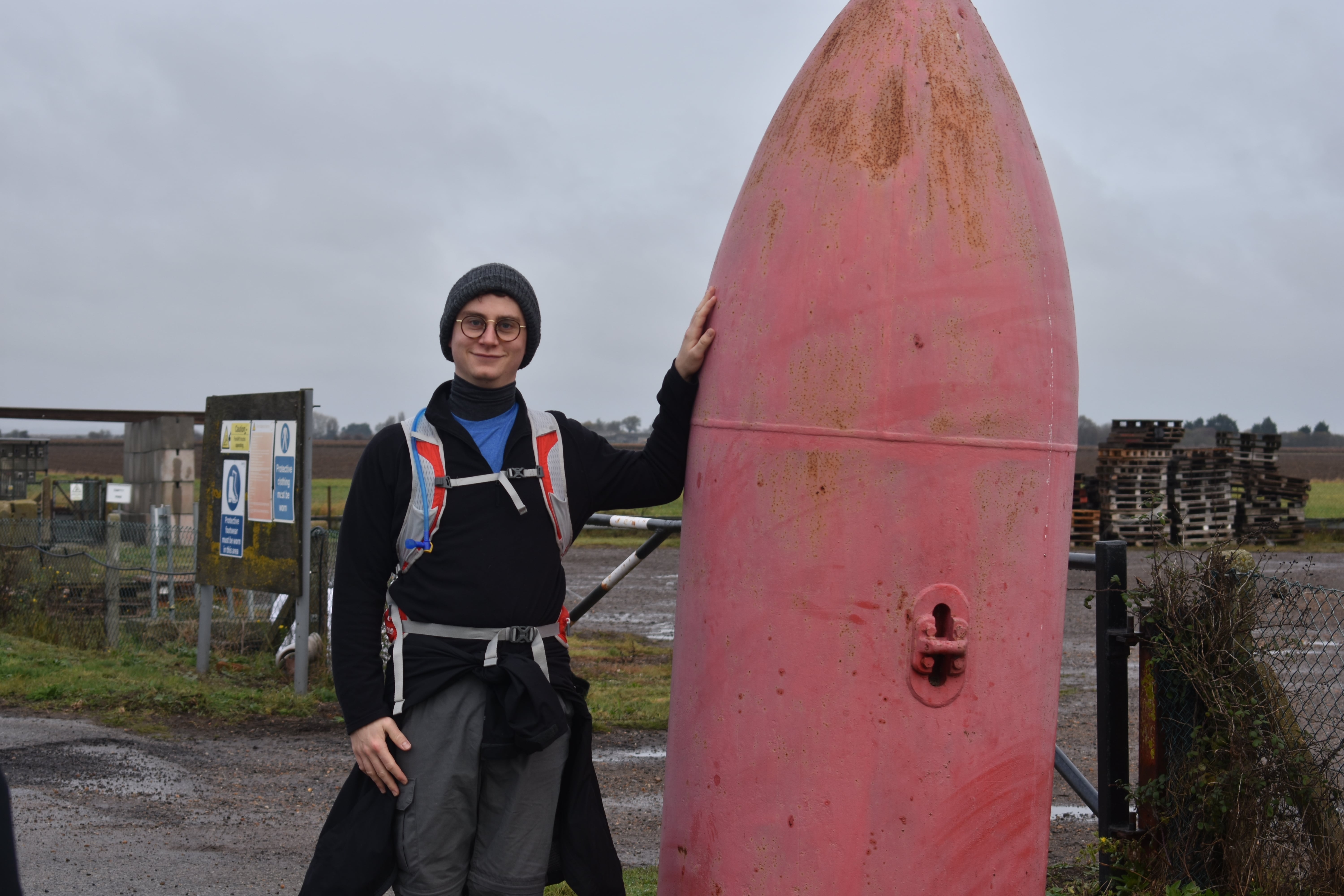
Walking the Broomway also makes me think… what other tidal adventures are to be had in the UK? Well… I have some ideas already and I certainly plan on bringing them up next time in the pub with the Boldy Goes Trio.
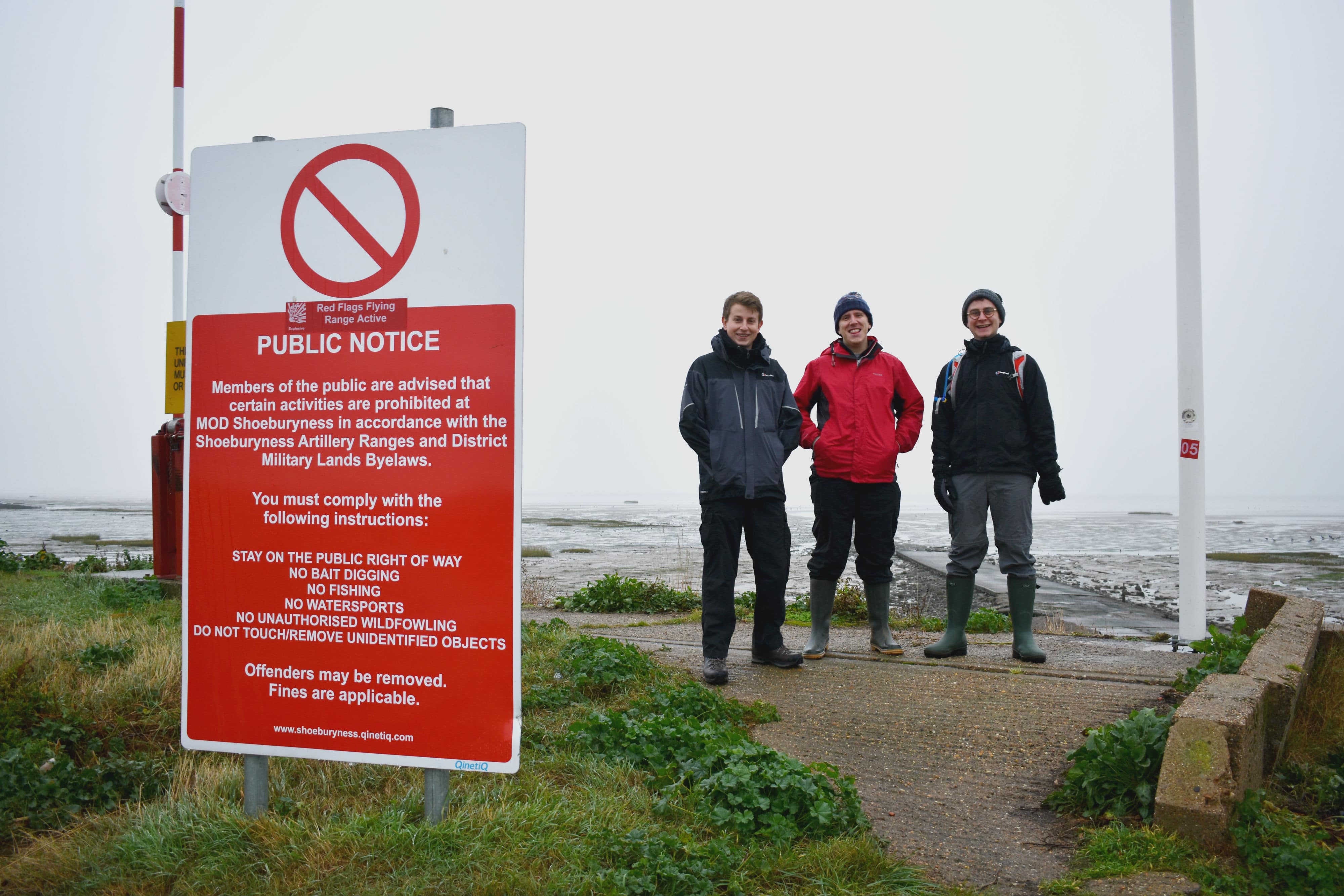
Tips for walking the Broomway:
-
Wellington boots are recommended. The water will easily swamp hiking boots and whilst bare feet would be fine away from the shore you do need something sturdier for Wakering stairs ands for making your way onto Foulness Island.
-
Make sure to do your research, especially around tide times. Consult David Quentin’s Broomway website.
-
It’s better to be safe than sorry. Just because this post makes it seem easy doesn’t mean that it will be. You should take a fully charged mobile phone but this alone is not enough. Take an OS map. Take a compass. Know how to use them and do not walk the path in poor visibility.